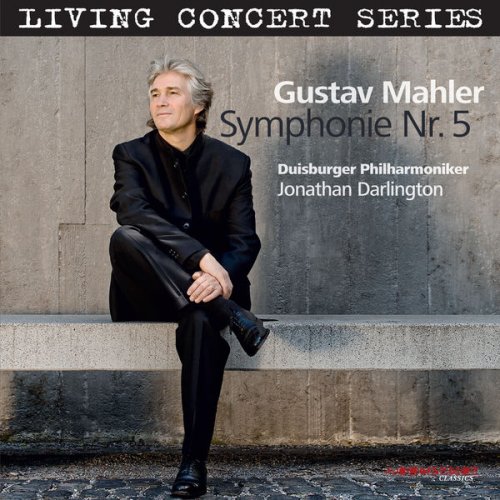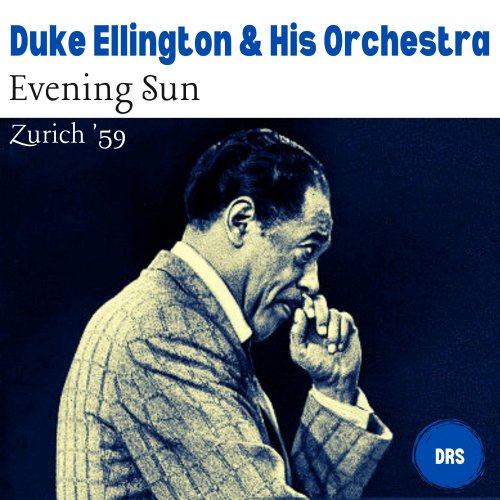Duisburg Philharmonic Orchestra & Jonathan Darlington - Gustav Mahler: Symphonie Nr. 5 (2011) [Hi-Res]

Artist: Duisburg Philharmonic Orchestra & Jonathan Darlington
Title: Gustav Mahler: Symphonie Nr. 5
Year Of Release: 2011
Label: ACOUSENCE Classics
Genre: Classical
Quality: FLAC (tracks, booklet) [96kHz/24bit]
Total Time: 1:09:09
Total Size: 867 MB
WebSite: Album Preview
Tracklist:Title: Gustav Mahler: Symphonie Nr. 5
Year Of Release: 2011
Label: ACOUSENCE Classics
Genre: Classical
Quality: FLAC (tracks, booklet) [96kHz/24bit]
Total Time: 1:09:09
Total Size: 867 MB
WebSite: Album Preview
Gustav Mahler (1860-1911)
Symphony No. 5 in C-Sharp Minor
1. I. Trauermarsch: In gemessenen Schritt - Streng - Wie ein Kondukt (12:05)
2. II. Sturmisch bewegt, mit grosster Vehemenz (14:31)
3. III. Scherzo: Kraftig, nicht zu schnell (17:54)
4. IV. Adagietto: Sehr langsam (8:55)
5. V. Rondo-Finale: Allegro (15:44)
After their very successful recording of Mahler´s 6th Symphony a few years ago, now on this album Jonathan Darlington and the Duisburg Philharmonics present an equally convincing new recording of the 5th Symphony.
Return to the Orchestral Symphony without the Addition of Voices
Gustav Mahler began anew with his fifth symphony. He returned to the instrumental symphony and did so without any programmatic description. The four “Wunderhorn” symphonies had already been composed. Texts from Achim von Arnim’s and Clemens Brentano’s collection of poems Des Knaben Wunderhorn (“The Youth’s Magic Horn”) - as well as additional verse - made their way into the second, third and fourth symphonies; the first symphony was a purely instrumental composition, but Mahler quotes his Lieder eines fahrenden Gesellen (“Songs of a Wayfarer”). The composer wrote the lyrics himself and based them on the inflections of the folk songs which are also found in the Des Knaben Wunderhorn collection. The symphonies of Gustav Mahler depict an unparalleled cosmos. His perception is all-encompassing, sometimes simple and small or humorous, but also grandiose or haunting, threatening and ominous. Also, sarcastic jags play a role: the music of Gustav Mahler captures the zeitgeist of the turn of the last century in a unique way, portraying his fine cultural standards on the one hand and his fears of a dark future on the other. At the time of its composition, it was very unusual to develop simple songlike inspirations into larger symphonic forms, and the Adagietto of the fifth symphony is a type of redemption which requires further explanation. The “Fifth” is the first of a group of three purely instrumental symphonies, since voices are not called for until the eighth symphony, the Sinfonie der Tausend, and the Lied von der Erde, but here on a completely different scale.
Gustav Mahler’s fifth symphony is an example of “absolute” music, or at least no programmatic description has been provided. However, just like all of Mahler’s important works, we are confronted with music which challenges our beliefs. Mahler raises existential questions as the symphony expands into an all-embracing cosmos, although clear answers are nowhere to be seen. The work thus has many different layers whose interpretive possibilities are not boxed in by any kind of denotative descriptions. However, there are markers to guide us through the layers. There are musical topoi as well as allusions to folk songs, children’s songs, chorales and marches. It is also characteristic of Mahler to go his own unconventional way, since the weighty funeral march is presented at the beginning of the composition. The funeral march is Mahler’s preferred idiom, since funeral marches or similar sounding music is also found in the first symphony and at the beginning of the Resurrection Symphony, among other places. The fifth symphony takes us through many stations between death, torpor and burdensome heaviness before going on to the rollicking joviality of the last movement rondo. And the grouping of the five movements into three parts which give the work its overall shape is food for thought.
24Bit Quad Sampling Ultra Definition Recording
Rating: 10/10 (klassik-heute, 10.10.2011)
Return to the Orchestral Symphony without the Addition of Voices
Gustav Mahler began anew with his fifth symphony. He returned to the instrumental symphony and did so without any programmatic description. The four “Wunderhorn” symphonies had already been composed. Texts from Achim von Arnim’s and Clemens Brentano’s collection of poems Des Knaben Wunderhorn (“The Youth’s Magic Horn”) - as well as additional verse - made their way into the second, third and fourth symphonies; the first symphony was a purely instrumental composition, but Mahler quotes his Lieder eines fahrenden Gesellen (“Songs of a Wayfarer”). The composer wrote the lyrics himself and based them on the inflections of the folk songs which are also found in the Des Knaben Wunderhorn collection. The symphonies of Gustav Mahler depict an unparalleled cosmos. His perception is all-encompassing, sometimes simple and small or humorous, but also grandiose or haunting, threatening and ominous. Also, sarcastic jags play a role: the music of Gustav Mahler captures the zeitgeist of the turn of the last century in a unique way, portraying his fine cultural standards on the one hand and his fears of a dark future on the other. At the time of its composition, it was very unusual to develop simple songlike inspirations into larger symphonic forms, and the Adagietto of the fifth symphony is a type of redemption which requires further explanation. The “Fifth” is the first of a group of three purely instrumental symphonies, since voices are not called for until the eighth symphony, the Sinfonie der Tausend, and the Lied von der Erde, but here on a completely different scale.
Gustav Mahler’s fifth symphony is an example of “absolute” music, or at least no programmatic description has been provided. However, just like all of Mahler’s important works, we are confronted with music which challenges our beliefs. Mahler raises existential questions as the symphony expands into an all-embracing cosmos, although clear answers are nowhere to be seen. The work thus has many different layers whose interpretive possibilities are not boxed in by any kind of denotative descriptions. However, there are markers to guide us through the layers. There are musical topoi as well as allusions to folk songs, children’s songs, chorales and marches. It is also characteristic of Mahler to go his own unconventional way, since the weighty funeral march is presented at the beginning of the composition. The funeral march is Mahler’s preferred idiom, since funeral marches or similar sounding music is also found in the first symphony and at the beginning of the Resurrection Symphony, among other places. The fifth symphony takes us through many stations between death, torpor and burdensome heaviness before going on to the rollicking joviality of the last movement rondo. And the grouping of the five movements into three parts which give the work its overall shape is food for thought.
24Bit Quad Sampling Ultra Definition Recording
Rating: 10/10 (klassik-heute, 10.10.2011)
Related Release:





![Jake Baxendale - Gardening Music, Volume 1 (2025) [Hi-Res] Jake Baxendale - Gardening Music, Volume 1 (2025) [Hi-Res]](https://img.israbox.com/img/2026-01/12/h1xq4dp1lh5mal47e7fhs2e8t.jpg)


